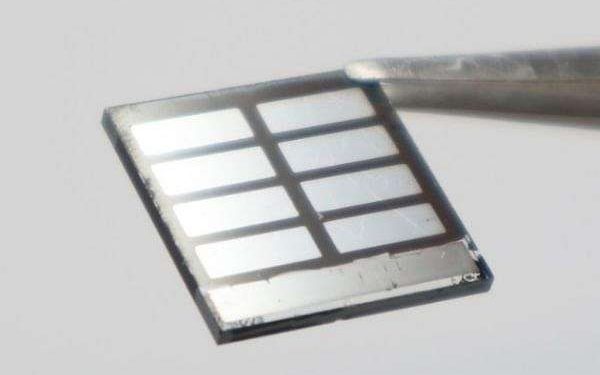Bulky additives could make cheaper solar cells last longer
by Staff Writers for Michigan News
Ann Arbor MI (SPX) Jan 12, 2024
Perovskites may also be combined with the silicon-based semiconductors that are prevalent in today’s solar panels to create “tandem” solar cells that could surpass the maximum theoretical efficiency of silicon solar cells.
“Silicon solar cells are great because they are very efficient and can last for a very long time, but the high efficiency comes with a high cost,” said Xiwen Gong, U-M assistant professor of chemical engineering. “To make high-purity silicon, temperatures over 1,000 degrees Celsius are needed. Otherwise, the efficiency won’t be as good.”
The high temperature comes with higher economic and environmental costs. But while perovskites can be produced at lower temperatures, they degrade when exposed to heat, moisture and air. As a result, the lifespan of perovskite today is too short to be commercially competitive in solar panels.
Gong’s research aims to make hardier perovskite solar cells, and her latest study published in the journal Matter suggests that bulky “defect pacifying” molecules are best at increasing the perovskites’ stability and overall lifespan.
Perovskite crystals contain lead atoms that aren’t fully bound to the other components within the perovskite. Such “undercoordinated sites” are defects often found on the crystal surfaces and at grain boundaries where there’s a break in the crystal lattice. These defects hinder the movement of electrons and speed up the decay of the perovskite material.
Engineers already know that mixing defect pacifying molecules into the perovskites can help lock up the undercoordinated lead, in turn preventing other imperfections from forming at high temperatures. But until now, engineers didn’t know exactly how a given molecule affected the hardiness of perovskite cells.
“We wanted to figure out what features on the molecules specifically improve the perovskite’s stability,” said Hongki Kim, a former postdoctoral researcher in chemical engineering and one of the study’s first authors.
To investigate the problem, Gong’s team created three additives with a range of shapes and sizes and added them into thin films of perovskite crystals, which can absorb light and convert it to electricity. Each additive contained the same or similar chemical building blocks, which made size, weight and arrangement the main properties differentiating them.
Then, the team measured how strongly the different additives interacted with perovskites and consequently influenced the formation of defects in the films. Larger molecules by mass were better at sticking to the perovskite because they had more binding sites that interact with perovskite crystals. As a result, they tended to be better at preventing defects from forming.
But the best additives also needed to take up a lot of space. Large but skinny molecules resulted in smaller perovskite grains during the manufacturing process. Smaller grains aren’t ideal because they also create perovskite cells with more grain boundaries, or more areas for defects to form. In contrast, bulky molecules forced larger perovskite grains to form, which in turn reduced the density of grain boundaries in the film.
Heating the perovskite films to over 200 degrees Celsius confirmed that bulky additives helped the films retain more of their characteristic slate black color and develop fewer structural defects.
“Both the size and configuration are important when designing additives, and we believe this design philosophy could be implemented across various perovskite formulations to further improve the lifetime of perovskite solar cells, light emitting devices and photodetectors,” said Carlos Alejandro Figueroa Morales, a doctoral student in macromolecular science and engineering and one of the study’s first authors.
Xiwen Gong is also an assistant professor of electrical and computer engineering, materials science and engineering, macromolecular science and engineering, and applied physics. The research was funded by the University of Michigan and relied on a scanning electron microscope funded by the National Science Foundation. Co-author Nancy Muyanja led the microscopy measurements at the Michigan Center for Materials Characterization.
Research Report:Molecular Design of Defect Passivators for Thermally Stable Metal Halide Perovskite Films
Related Links
University of Michigan
All About Solar Energy at SolarDaily.com
















